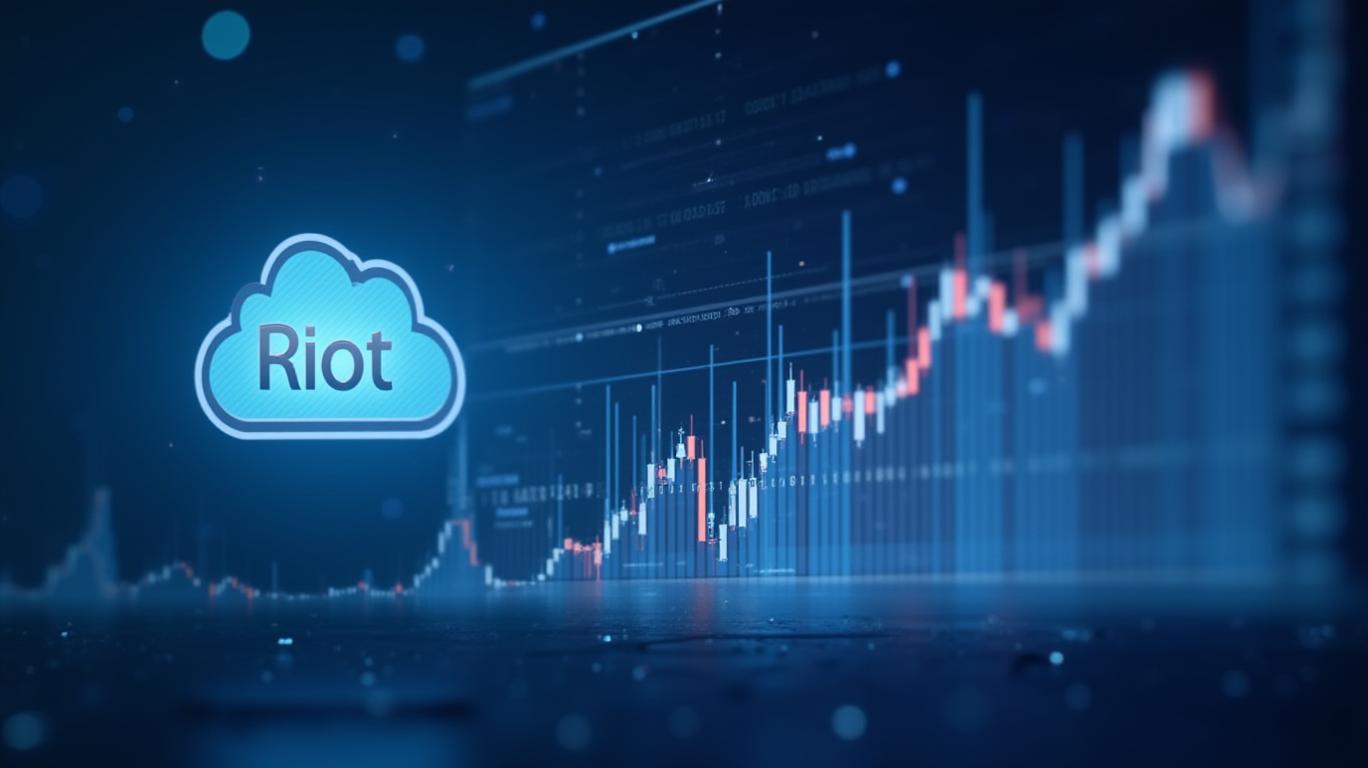Riot Platforms: Navigating Insider Sales Amid Evolving Market Dynamics
The recent Form 144 filing by
, Inc. (RIOT.US) director Hannah Cho, announcing the sale of 15,000 shares, has reignited debates about whether such transactions signal a strategic opportunity or a red flag for investors. While insider sales often prompt caution, the specifics of this filing—and broader market dynamics—suggest a nuanced narrative. Let's dissect the implications for stock valuation, institutional sentiment, and the company's trajectory.Stock Valuation: A Drop in the Bucket, or a Cautionary Signal?
At first glance, Hannah Cho's planned sale of 15,000 shares—valued at $261,300 as of February 28, 2024—might seem concerning. However, the transaction accounts for a mere 0.006% of the company's total outstanding shares (253.5 million). This minuscule percentage, combined with the absence of prior sales by Cho or related parties over the preceding three months, tempers fears of widespread insider pessimism.

Critically, Form 144 filings are routine disclosures for restricted stock sales under SEC rules. Cho's shares were acquired in 2022 via equity awards, and their sale now aligns with standard vesting schedules. Yet, investors must consider whether this timing reflects confidence—or doubt—in Riot's pivot from blockchain to broader platforms.
A deeper dive into valuation reveals that Riot's stock has been buffeted by sector-wide volatility. shows a stock that has underperformed broader markets, potentially offering a valuation discount. If the company's repositioning into AI-driven platforms gains traction, this could be a buying opportunity rather than a red flag.
Institutional Sentiment: Stability Amid Shifting Winds
While Cho's sale grabs headlines, institutional ownership trends tell a more reassuring story. typically reveals whether large investors are accumulating or divesting. If ownership has remained stable—or even increased—despite the filing, it would signal that institutional confidence remains intact.
The absence of other Form 144 filings by senior executives in the past quarter further underscores this point. Unlike scenarios where multiple insiders sell en masse—a classic red flag—Riot's isolated transaction appears isolated. This contrasts with, say, a company like Tesla, where repeated insider sales might reflect broader concerns.
Market Dynamics: Riding the Platform Shift or Falling Behind?
Riot's strategic shift from blockchain to AI and cloud-based platforms is central to its valuation debate. The company's move reflects a broader industry trend: legacy blockchain players are diversifying to avoid obsolescence.
would illuminate whether the pivot is bearing fruit. If platform-related revenues are accelerating, investors might overlook minor insider sales as noise. Conversely, stagnant growth could amplify concerns.
The December 2024 filing by a separate selling stockholder (unrelated to Cho) to resell 180,000 shares hints at possible liquidity needs, but this too must be contextualized. The shares were acquired in a private transaction, suggesting a desire to monetize a specific holding rather than a broader sell-off.
Conclusion: A Strategic Opportunity Awaits Discerning Investors
While insider sales always warrant scrutiny, Riot's case lacks the hallmarks of a systemic red flag. The small transaction size, lack of prior sales, and institutional stability collectively suggest that Cho's sale is a routine event rather than a harbinger of doom.
For investors, the key question is whether Riot's platform shift is credible. If the company can demonstrate meaningful progress in monetizing its new offerings—evidenced by rising platform revenue or strategic partnerships—the current dip could be a rare chance to buy at a discount.
would further clarify its valuation attractiveness. At a time when many tech stocks are priced for perfection, Riot's lower multiple could offer asymmetric upside.
Historically, the stock has shown strong performance around earnings events.
In short, the Form 144 filing is a distraction. Focus instead on the company's execution in its new domain—and act decisively before the market catches on.
Action Item: Monitor Riot's Q2 2025 earnings for updates on platform adoption and revenue diversification. Pair this with a close watch on institutional buying patterns and sector tailwinds. For those with a long-term horizon, the risk-reward calculus is compelling.

Comments
No comments yet